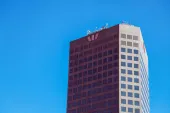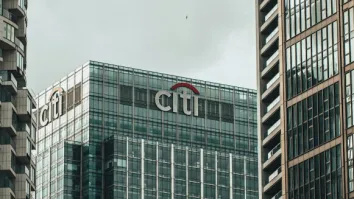Why ‘Gapping’ may not be enough to bridge the gap
As the big names in global banking continue to tumble, more than a few eyes have been turning to the local markets to ask the inevitable (but unthinkable) what if it happens here? Hong Kong already experienced its own taste of possible disaster when a string of malicious SMSs sent Bank of East Asia depositors into a tailspin. In Singapore, life insurance company AIA saw round-the-block queues when its parent AIG received US government intervention, and policy holders panicked that their life savings were about to vanish. So far, the club of three banks – DBS, OCBC and UOB – seem to be holding their head above water. And analysts predict that, provided their loans’ business obeys the rules from the Asian Financial Crisis - where the local consumer loans held up and bad debts came largely from regional corporate exposure – the three should be OK.
If there has been only one constant to emerge in this current financial crisis it is that the patterns of the past are not holding true. So if one of the three goes bad, which one will it be and why? The least favoured of Singapore’s domestic trio is, and always has been, OCBC. Smaller by risk weighted assets than the other two, OCBC has never achieved the commercial clout of UOB, which has the highest ROE of the three nor the depositor base of DBS, with its POSB accounts (at the time of merger in 1998 almost every adult Singaporean had a POSB account). Still, OCBC can boast of nine consecutive quarters of growth in net interest income, which they are forecasting will continue in 2009 as net interest margins widen. And of the three, UOB appears to be taking the most aggressive position on loans, which is where the hunt begins.
‘Gapping’
After years of increasingly slender net interest margins, hope is finally emerging that the end of the days of cheap credit will mean more profit for the loans business. UOB is predicting its loan portfolio to increase by $4,353m through 08/09, DBS has similar predictions of $2,319m and OCBC is forecasting uplifts of $3,512m. Only UOB is forecasting a slide in NIM during that period. OCBC, by contrast, is expecting a whacking increase in loan revenue with NIMs rising from 1.83 to 2.02 - a juicy profit on that expanded portfolio, assuming it happens. But what of the impact on the loans/deposit ratio?
The whole world saw what happened to HBOS when capital flight drew attention to a loans portfolio that had exceeded deposits by 177%. Of the three, DBS retains (unsuprisingly) the highest depositor ratio, with UOB taking the most aggressive position. OCBC predicts a L/D rise to 83.4% by 2009, which, if loans are to grow at predicted rates, requires a depositor increase of $3,166m...in a credit crisis.
Funding capacity aside, whilst higher interest rates on new loans would boost NIMs, what would be the effect on the existing portfolio? Singaporean households are nowhere near as leveraged as their international cousins in the US and Europe, which is great news but no reason for a false sense of security.
Flipping property flippers
Probably the most exposed groups to financing risk in Singapore at present: property flippers and developers who have been left holding flopped (or at least floppy) deals at the end of the nation’s biggest real estate boom. Word on the street is that many flippers whose final deal flip-flopped, and who have been left holding high-value, low yielding assets, are holding out for year end. They are gambling that the capital injections into US, UK and European banking sectors will re-ignite stagnated property markets in Singapore and provide an exit route, even if at a loss.
UBS analysts now expect prime residential launch prices to fall 20% from current levels (32% peak to trough). However, if prices fall more than 20% some buyers could seeks to default. Massive defaults in the property sector in the US led to country-wide repossessions. And whilst unlike the average US sub-prime mortgage holder, Singapore’s property flippers are unlikely to find themselves homeless, the write offs could create a significant impact to the banks and a risk to future earnings.
Current coverage for non performing loans among the three Singapore banks is running at an average of 2.4%, with overall provisioning increasing by an average of 60% since the beginning of the recent credit crunch. UOB has taken the least increase in its coverage for non performing assets, taking just a 25% increase. Expectations of falling house prices are having a direct impact on Singapore’s bottom line. UBS economists now expect Asia to grow at 6.1% (from 6.9%) and Singapore to grow at 1.5% (from 4.8%) in 2009 as a result of downgrades in house price expectations.
Developers may look to refinance
Defaulting buyers also impact the development sector. In 2007, developers sold 14,700 units, of which around 40% were in prime districts and the Central Area. Analysts reckon that up to half of the units may have been bought on deferred payment schemes - where buyers pay 20% of the purchase price at launch and the remaining at completion. With plummeting prices, some buyers may choose to take a 20% hit now rather than risk much bigger losses on negative equity, leaving developers like Wheelock, SC Global, Keppel Land, Ho Bee and Wingtai in the hole.
The developers are already showing lower earnings this year. Defaulting buyers would leave developers with two choices: sue or repudiate the agreement. Much will depend on how capable they believe the buyer is of paying and how resaleable they believe the property to be, even at a loss. With demand for office space in the CBD declining, the outlook for developers could be dire. Reports in our sister publication, Singapore Business Review, that domestic REITs could face refinancing issues does not bode well for developers who are similarly exposed. Short financing terms (compared to international averages), with many loans taken in the boom due to roll over in 2009, has left REITs exposed.
Which means that Singapore’s property trusts and developers will be scrambling for cash at a time when banks will likely have cause to lower the valuations on their assets. Few are predicting an implosion in the Singapore banking sector, however consolidation is not unrealistic, nor is the chance that a global player with aspirations to drill into Singapore’s mass market would pass up an opportunity to snap up a 20% stake in a tasty, island-wide branch network.



















 Advertise
Advertise









